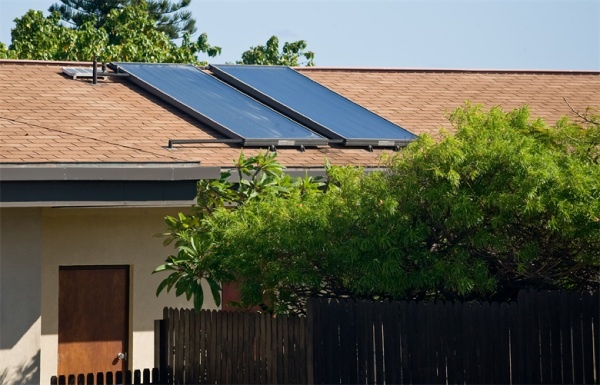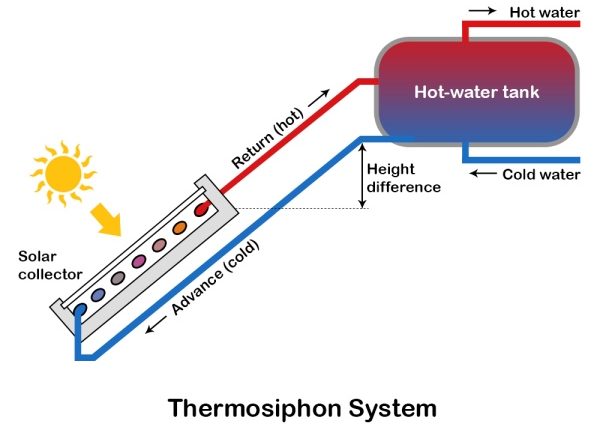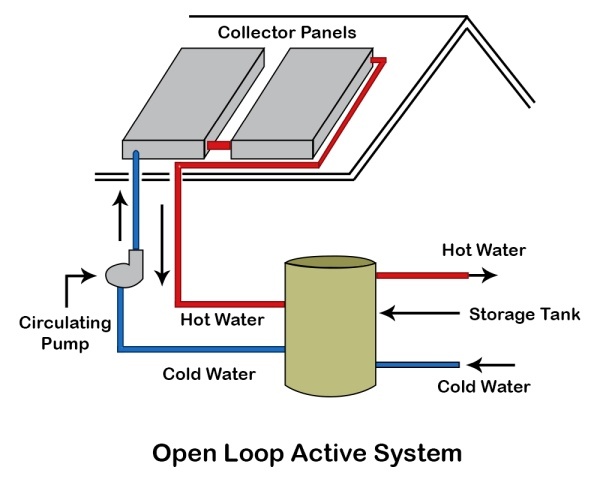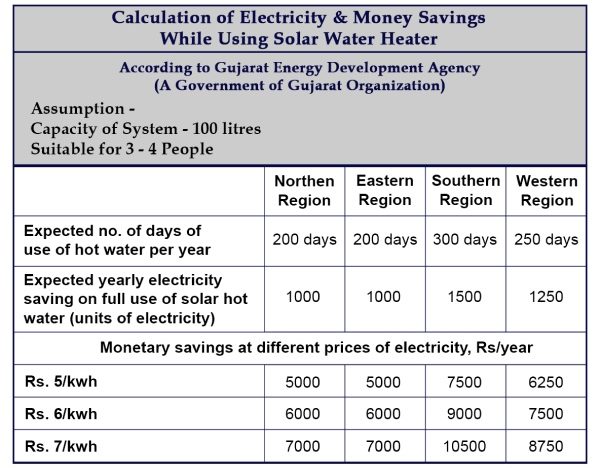Energy conservation and its optimum utilization is one of the crucial needs of any society at any point of time. This is the need of an hour. There is a meticulous correlation between the energy, the environment and the economic development. Well, while we are trying to make best out of it, we shall have to certainly take into consideration the social and technological impacts associated with it.
“The sustainable economic growth is possible only by the efficient use of fossil fuel and available natural resources such as solar energy. This improves the quality of everyone’s lives on the planet earth.” says ‘G.N. Tiwari’, ‘Arvind Tiwari’ & ‘Shyam’ – the Authors of Handbook of Solar Energy Theory, Analysis and Applications.
How is it possible that we talk of natural sources of energies and we do not talk of the Sun! The Sun is the major renewable energy resource on earth which meets many of our needs. The energy from the sun nourishes anything from we human beings to the tinniest living organism on this planet earth.
The solar radiation incident on the surface of the earth can be conveniently utilized for the benefit of human race. Solar Water Heater system is one such example that has proven to be a successful application that makes the use of solar energy to make the water hot. This application has almost become a household name. Let us see the advantages and types of solar water heater.

What is Solar Water Heater?
A Solar Water Heater is a device which makes the water hot by using thermal energy of the sun. It is generally installed on the terrace or on the roof or any such place where sunlight is available.
Solar water heaters are often used for various domestic purposes as they suffice the need of hot water for bathing, washing, cleaning etc., particularly on cold days. The performance of a solar water heater depends upon the intensity of solar radiation available and the temperature of water coming into the system.
Will solar water heater generate hot water on all the days and all the seasons?
The answer to this question is:
- On a Bright sunny day – Maximum
- On a Partially cloudy day – Moderate
For how many days of the year will solar water heater generate hot water?
Well, it depends on the local climate and the number of sunny days. In a country like India, the sunrays are available for almost 300 to 325 days of the year. For the rest of the days when the sunrays are not available, one needs to provide the contributory backup heating system with Electrical heater at extra cost.
How to get Hot Water from Solar Water Heater when Sunlight is not available?
When sufficient sunlight is not available i.e. during the rainy or cloudy days, electric geysers are required as a backup.
Maximum Possible Temperature that Solar Water Heater could attain
One can get water of about 60 to 80 0C. The rise in temperature depends on the following factors:
- Solar Radiation
- Weather Condition
- Number of Solar Collectors
What is the range of temperature of hot water safe for use?
Generally, 45 0C to 50 0C (113 0F to 122 0F) is enough for showers/bath depending upon one’s habit and climate.
Hot water can burn us, hence one must be careful. ASSE International Plumbing Dictionary defines Hot water as ‘water at a temperature more than 49 0C (120 0F)’. Burns from hot water is a result of an increase in temperature of water above a safer range. Therefore, the temperature of a solar water heater should be maintained as per standard codes.
According to Occupational Safety and Health Administration (OSHA) – United States Departments of Labour, for a domestic water heater, maintaining temperature 60 0C (140 0F) in a storage tank and delivering it at a minimum of 50 0C (122 0F) to all outlets is recommended.
The quality of Water Needed for Solar Water Heating System
Only soft and potable water is recommended for a solar heater. The water from bore wells is hard, hence it is not recommended as it might cause scaling which can result in ultimate choking of the system. However, hard water can be used by using a unique jacket type heat exchanger or with softener.
How to decide the capacity of Solar Water Heater?
The size or capacity of a solar water heater depends on how much hot water you need. Domestic hot water use varies widely depending upon several factors, which includes the number of people living in your home and their age. To make the job easy for you, ask yourself the following questions:
- How many people live in your house?
- How many bathrooms do you have?
- How many appliances such as washing machines etc. require hot water?
- Do you have a swimming pool?
- Do you have many visitors staying at your home?
- Are there teenagers in the family? (They tend to use more water)
According to ‘Prof. Subhash M. Patil’ (Author of a book called Plumbing Engineering – Theory, Design and Practice), The average per capita daily use of water for drinking, bathing, washing, cleaning and cooking vary from person to person and place to place. However, the water demand of 135 litres per head per day has been considered uniformly.
Of this, some part of the water is used as hot water as per the requirement. The hot water requirement is considered in terms of fixture units similar to cold water. However, 15 litres to 30 litres per head per day of hot water is required by every individual depending upon factors as discussed above.
For more detail Read: Decide the capacity of Solar Water Heater for your Home
Hence basically, 100 – 500 litres capacity of solar water heater is suitable for domestic Application. Large system (Above 500 litres capacity) is suitable for restaurants, canteens, guest house, hotels, hospitals, etc.
In Which Direction should the Solar Water Heater be Installed?
To produce the maximum quantity of hot water, the solar collector needs to face the sun directly. This means that the sun should strike the surface of the collectors at right angles and not subjected to any shade.
According to National Renewable Energy Laboratory, you must have a south-facing location (i.e. roof) on your property to take maximum advantage of these heaters.
Benefits of Solar Water Heater
- According to the Ministry of New and Renewable Energy – Government of India, Solar water heater of 100 litres capacity can prevent the emission of 1.5 tonnes of carbon dioxide per year. And, it does not pollute the environment.
- Using a solar water heating system will help to reduce harmful emission from fossil fuels. You can enjoy the free energy coming from the Sun, which could save your energy cost for heating water.
- Solar water heaters offer long-term benefits. In addition to having free hot water after the system has paid for itself in reduced utility bills, you will be safe from future fuel shortages and price increases.
Components of Solar Water Heater
A solar water heater is a combination of
01. Solar Collectors
a) Flat Plate Collectors
b) Evacuated Tube Collectors
02. Storage Tank
03. Interconnecting Pipe Work
04. Heat Exchanger
05. Pump (Not compulsory depends on levels)
01. Solar Collectors
The main part of a solar water heater is the solar collector, which absorbs solar radiation and converts it into heat. The solar collectors are usually located on the roof of the building to capture solar radiation.
Two types of solar collectors are commonly used in the solar water heater system.
a) Flat Plate Collectors:
- Flat plate collectors are mostly used for domestic water heating. It is simple in design and has no moving parts, so it requires little maintenance that reduces initial cost.
- It is an insulated, weather proofed box containing an absorber plate under one or more transparent covers. They collect both direct and diffused radiation.

b) Evacuated Tube Collectors:
- Solar Evacuated tube collectors are made up of rows of parallel, transparent glass tubes. Each tube consists of an outer glass tube and inner tube or absorber covered with a selective coating that absorbs solar energy well but inhibits radioactive heat loss.
- The air is withdrawn from the space between the tubes to form a vacuum, which eliminates conductive and convective heat loss. They are most suited to freezing area or in situations of consistently low sunlight.

02. Storage Tank
The storage tank can be rectangular or cylindrical in shape. The tank is covered with a top-quality insulating material which keeps the water hot throughout the non-sunny hours. This ensures the supply of hot water during the night and early morning.
03. Interconnecting Pipe Work
The collector is connected to a storage tank by pipes. These pipes are of copper or galvanized iron. The size of the pipe depends on the flow rate and system capacity.
Which Type of Solar Water Heater System is best for your Home?
Basically, there are two types of solar water heating systems:
01. Passive Solar Water Heating System
02. Active Solar Water Heating System
a) Direct System (Open-loop System)
b) Indirect System (Close-loop System)
What is the major difference between the Active and the Passive solar water heating system?
The active system uses a pump to circulate water or a heat transfer fluid from storage tanks through the collectors. Whereas a passive system relies on gravity and its tendency for water to naturally flow as it is heated, allowing water or heat transfer fluid to move through the system without the use of a circulating pump.
Nowadays, passive solar water heating system is widely used. If there is sufficient space and adequate sunlight available on the terrace of your building, this system is advantageous. Let us understand what is this passive solar water heating system?
01. Passive Solar Water Heating System
- In Passive solar water heating system, water or heat transfer fluid is circulated by natural convection between a solar collector and the storage tank without any pumps.
- In this system storage tank is located above the solar collector.
- Thermosiphon system is the best example of passive solar water heating system.
- In the thermosiphon system, water comes from the storage tank to solar collector by natural circulation.
- When water gets heated in the collector, it then circulates from the collector to the storage tank.
- The cold water at the bottom of the storage tank runs into the collector and replaces the hot water.
- The process of circulation stops when there is no solar radiation on the collector.
- The passive system is not as efficient as the active system but is less expensive compared to the active system.

02. Active Solar Water Heating System
An active system is the one where the water is pumped from the storage tank through the collectors and back into the tank. In this system, pump is required for water circulation because storage tank is installed below the collector.
The system works accordingly:
- First, the water is pumped up into the rooftop collectors where it is heated.
- It is then sent through heat exchanger typically attached to or near the storage tank.
These active solar water heating systems are further classified into two categories,
a) Direct Systems
b) Indirect Systems
a) Direct System (Open-loop System):
- A direct system is also known as an Open-loop System.
- These systems are suitable in areas that do not freeze for long periods and do not have hard or acidic water.
- In Direct system or open-loop systems, Cold water from the storage tank is pumped to the collector.
- Once the water is heated, it is then transferred to a storage tank. Later you can use this water in your home for various purposes.

b) Indirect System (Close-loop System):
- Indirect System is also known as Close-loop system.
- These systems are popular in Cold regions because they offer excellent freeze protection.
- This system is similar to the direct active system except for the fact that the heat exchanger is located in the storage tank.
- The purpose of the heat exchanger is transferring the heat from hot water to the cold water. Later you can use this hot water in your home for various purposes.

Your choice for the type of system to be installed will mainly depend upon the factors like – the climatic conditions, hot water demand, size of the system and the space availability for placing extra components etc.
What is the Approximate Cost of Solar Water Heating System?
The cost of a solar water heater depends upon the size and the type of system you opt. According to Gujarat Energy Development Agency (GEDA), approximate cost of 100 litre capacity of solar water heating system is around Rs. 22,000 (If flat plate collectors are used) and Rs. 16,500 (If evacuated tube collectors are used).
Is there any subsidy available for solar water heater from the Government?
The Government has taken some good initiatives in this matter. The Government of India has categorised all the Indian states into two categories under this initiative – general states and special states. The Government is providing 30% subsidy on the cost to the users in general category states and 60% in particular category states, i.e. the Hilly States, N-E states and islands limited to specific benchmarks. Therefore, the Users will have to pay the cost after deducting government subsidy.
Can Solar Water Heater save Money and Electricity?
Well, the whole intention behind is to save money and electricity. A 100 litre per day capacity solar water heating system suitable for 3 – 4 people, can save up to 1500 units of electricity in a year, depending upon the quality of hot water used.
The table below gives approximate electricity and money-saving for typical 100 litres per day system located in different regions.

What is the Payback Period of Solar Water Heater?
The Initial cost of a solar water heater is definitely high compared to the available conventional alternatives. The payback period of 100 litres per day system can be,
- 3 – 4 Years if you replace electric geysers.
- 4 – 6 Years if you replace gas-based geysers. (It will depend on the cost of gas)
The payback period depends on the installation, fuel replaced and utilization pattern.
Problems of Solar Water Heaters
There are many advantages of solar water heating system, yet as there’s other side to any coin, you do have some disadvantages associated with the same. Let us discuss some of them.
01. What Happens on a Cloudy Day?
Solar water heating systems require sunlight; the bulk of production will take place under sunny conditions only. The output is directly proportional to the amount of infrared sunlight available at any given moment. When there are rains or during cloudy days you will not get hot water. The use of other conventional energy will be needed then.
02. What if there is Hard Water?
The Evacuated tube collector type solar heaters are not susceptible to scaling due to the smoothness of the glass tube. The large diameter of the tubes ensures that minor scaling does not inhibit the efficiency of the system.
03. What if you have high-pressure bath fittings such as rain showers, jacuzzis or body jets?
Most of the manufacturers offer pressurised systems to cater the high-pressure bath fittings.
04. How do you integrate the solar water heater with current plumbing system without any breakage?
Most of the systems available in the market are very easy to install and integrate with all kinds of existing plumbing systems without any breakage to existing plumbing. An expert from the installation team of the Manufacturer will visit your site and provide you with a detailed plan on how the system can meet your requirements.
05. Are additional geysers required after installing Solar Water Heater?
Most of the Solar Water Heating System has an inbuilt option of electrical back-up, so no other geysers are required in the bathrooms.
06. Are there maintenance requirements for a solar water heater?
Of course, they do. Solar water heaters require periodic maintenance. However, it is essential to inspect your solar water heater at least once a year to ensure that all the components are in proper working condition.
For more detail Refer: Solar Water Heater: Requirements of Cost & Maintenance
Summing up, One of the best ways to include renewable technologies which is not only cost effective but harmless is by incorporating solar water heaters. Solar water heater is one such example where the technology walks hand-in-hand with the nature! A quintessential domestic solar water heating system reduces the need for various conventional resources. It minimizes the expense of electricity and reduces the adverse environmental impacts associated with the other fossil fuels as it is environment friendly. It is now-a-days used in many countries. This is to be noted that solar water heaters are particularly beneficial in the areas where electricity is expensive and power cuts are frequent. Thus, it is a good investment for you and your family.
Image Courtesy: Image 2
Disclaimer
Products shown/recommended above in the article is only for the purpose of review/understanding. Due to Covid-19, all the third party affiliate programmes have been stopped, so the product may be unavailable for purchase. We, at Gharpedia, not selling these items directly. Hence, Gharpedia is not responsible for the delivery of these items. In this period we would Request you to cooperate with us until further notice.






